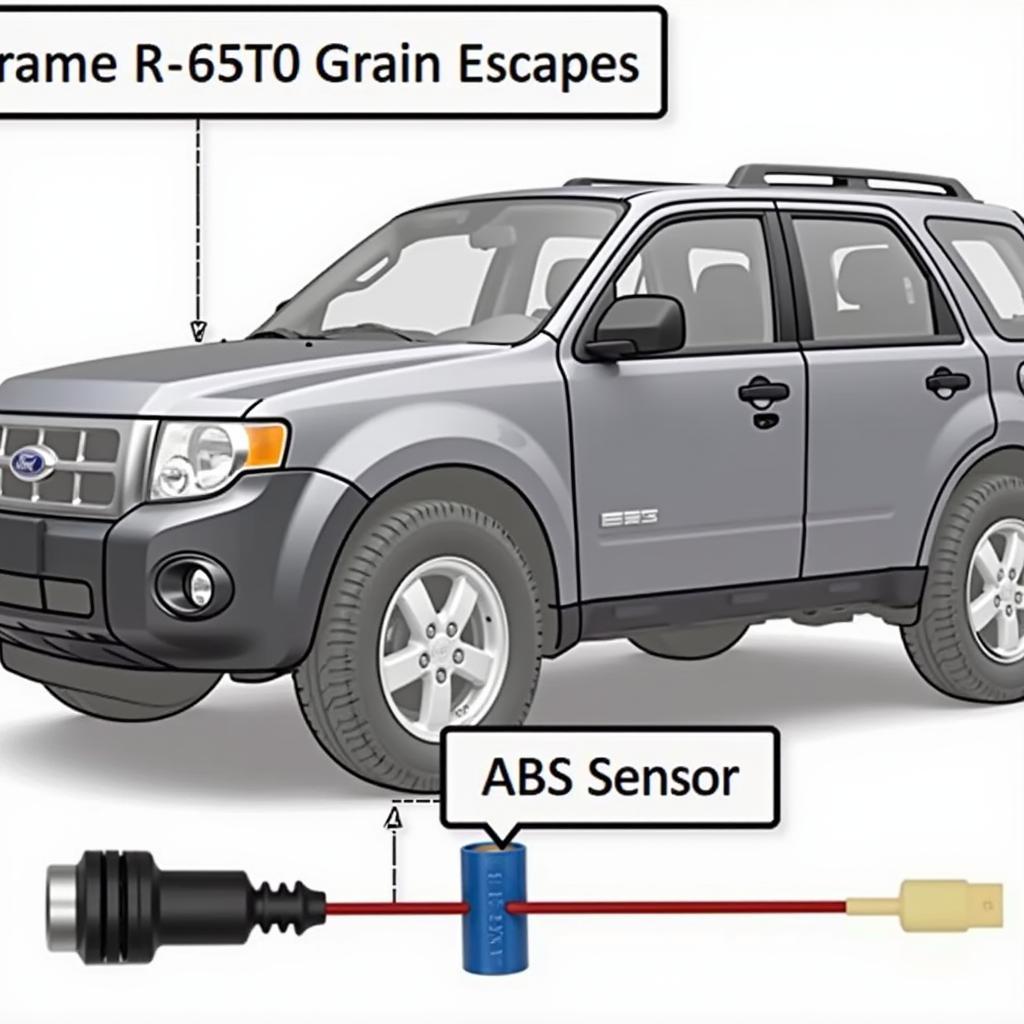If you own a 2010 Ford Escape, you may have encountered the dreaded brake warning light illuminating on your dashboard, especially when starting your car on a cold morning. This issue, while concerning, isn’t necessarily a cause for major alarm. Often, it’s a symptom of a relatively minor problem that can be addressed without a trip to the mechanic. This comprehensive guide will walk you through the common causes of a 2010 Ford Escape brake warning light appearing when cold, helping you diagnose and potentially fix the issue yourself.
Understanding Your Ford Escape’s Brake System
Before diving into troubleshooting, it’s beneficial to have a basic understanding of your Ford Escape’s brake system. It primarily consists of:
- Hydraulic System: This system utilizes brake fluid to transmit force from the brake pedal to the wheels, ultimately stopping your vehicle.
- Brake Pads and Rotors: These components work in tandem to generate friction, which slows down the wheels.
- Brake Fluid: This specialized fluid is essential for transmitting hydraulic pressure within the braking system.
- Sensors: Your Escape has several sensors within the brake system, including the brake fluid level sensor and the brake pad wear sensors. These sensors play a crucial role in triggering the warning light on your dashboard when they detect an issue.
Common Causes of a Brake Warning Light in Cold Weather
Several factors can cause the brake warning light to illuminate, especially when the temperature drops. Let’s explore the most frequent culprits:
1. Low Brake Fluid Level
One of the most common reasons for a brake warning light is low brake fluid. As brake pads wear down, the brake fluid level naturally decreases. However, if the level drops significantly, it could indicate a leak in the system. Cold temperatures can exacerbate this issue by causing the brake fluid to contract, further lowering the fluid level.
Troubleshooting Tip:
Begin by checking your brake fluid level. Locate the brake fluid reservoir (refer to your owner’s manual if unsure), and visually inspect the fluid level. If it’s below the “MIN” mark, add the appropriate brake fluid (DOT 3 or DOT 4 for most Ford Escapes).
2. Worn Brake Pads
Brake pads are designed to wear down over time. As they wear, the brake pad wear sensor will eventually make contact with the brake rotor, triggering the brake warning light. This wear is often accelerated in cold weather due to increased condensation and potential rust formation on brake components.
Troubleshooting Tip:
While you can visually inspect your brake pads for wear, it’s recommended to have a mechanic check them to determine if they need replacement.
3. Faulty Brake Fluid Level Sensor
Like any sensor, the brake fluid level sensor in your Ford Escape can malfunction. If it sends a false signal to the car’s computer, the brake warning light may illuminate even if the brake fluid level is adequate.
Troubleshooting Tip:
Diagnosing a faulty brake fluid level sensor usually requires specialized tools. If you suspect this is the issue, it’s best to consult a qualified mechanic.
4. Issues with the ABS System
Your Ford Escape is equipped with an Anti-lock Braking System (ABS). If the ABS module or any related sensors malfunction, it can trigger the brake warning light. This issue might be more pronounced in cold weather as moisture and condensation can affect the ABS sensors.
Troubleshooting Tip:
Troubleshooting ABS issues typically requires diagnostic equipment. It’s advisable to take your Escape to a mechanic or dealership for diagnosis and repair.
 Ford Escape ABS Sensor Location
Ford Escape ABS Sensor Location
Expert Insights
“Many car owners tend to overlook the importance of regular brake system maintenance,” says John Miller, a seasoned automotive technician with over 20 years of experience. “Regularly checking your brake fluid level and getting your brake pads inspected can prevent unexpected brake issues, especially during colder months.”
“Remember,” Miller emphasizes, “never ignore a brake warning light. Addressing the issue promptly ensures your safety and can prevent more costly repairs in the long run.”
Conclusion
A brake warning light illuminating on your 2010 Ford Escape, especially in cold weather, shouldn’t be ignored. While it might stem from a minor issue like low brake fluid, it could also indicate a more serious problem requiring professional attention. By understanding the common causes and following the troubleshooting tips outlined in this guide, you can take the necessary steps to ensure your safety and keep your Ford Escape running smoothly.

